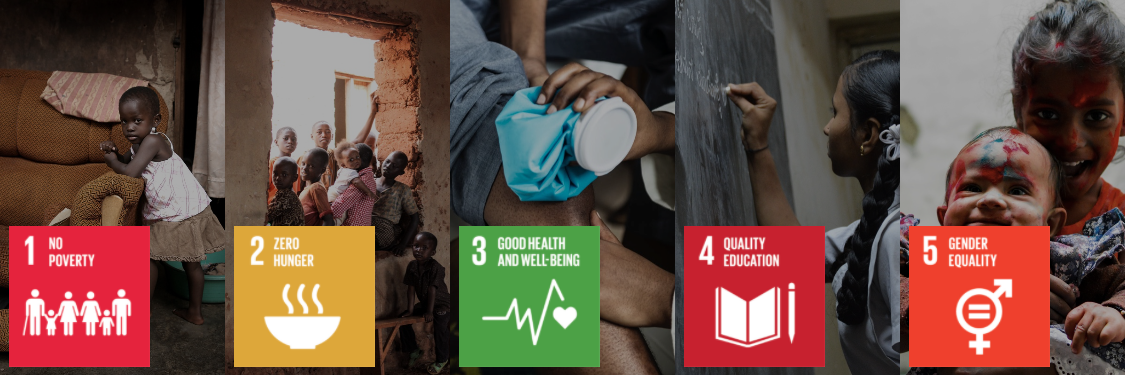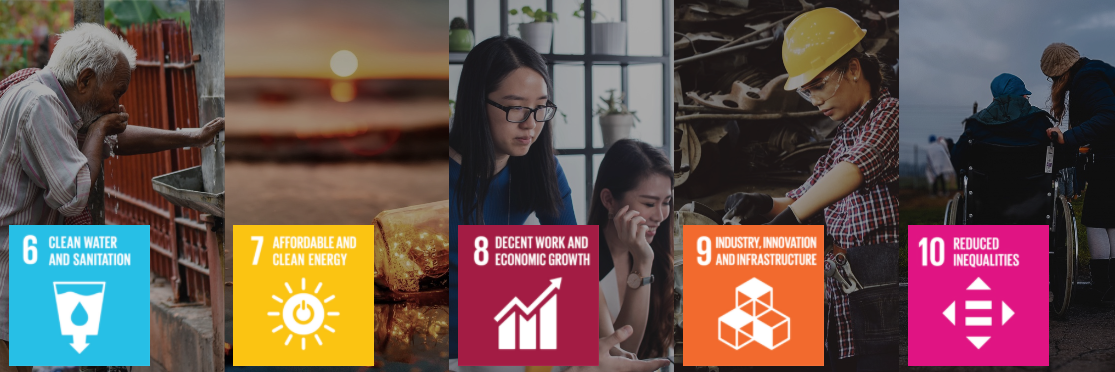Before the pandemic, a majority of global aid, help and investments were focused on reducing inequality in underdeveloped societies. Projects and investments addressing equality helped multiple countries to draw a more sustainable picture for their future. However, Covid-19 pandemic has led the global community to step back from investing in the future and focus on the negative impact of current events. Before the pandemic politicians in the global community had emphasized the importance of rapid transition to sustainable systems for countries. In the same meetings, country representatives labelled this global crisis and its aftermath as a critical period to work on international sustainability goals.
Aiming for a Sustainable Future During the Pandemic

A More Equal World
Back in 2015, 193 members of the United Nations prepared a comprehensive action plan for a sustainable future. UN’s action plan noted that an equal world is essential for a sustainable environment and economy. Furthermore, the plan stated that we should eliminate hunger, reach gender equality, find solutions to extreme poverty, eliminate difference socioeconomic standing between countries and aim to integrate alienated individuals into our societies for a sustainable world. Member countries pledged to help underdeveloped countries achieve their goals for rapid progress. Members aptly named it as the promise of not “Leaving Anyone Behind”.
Prior to the pandemic researchers predicted that extreme poverty around the world would be eradicated before 2030. Unfortunately, the current crisis has caused a dramatic increase in poverty for the first time since 2010. Covid-19 forced 71 million people into extreme poverty and that young people were twice as likely to live in extreme poverty than the older generation.

Despite a century long journey towards equality, women still do not have the same social status as men. Past equality movements allow women to have successful careers and provide for their own livelihood today. However, reports show that societies and businesses are still far from reaching equality. For example, women working from home during the pandemic have expressed increased expectations from their partners regarding housework and have stated that their share of house duties are way too high.
According to reports, income inequality decreased in 38 out of 84 countries before the pandemic. However, measures taken by companies during this crisis period caused an increase in unemployment and workers’ income has decreased significantly. According to studies conducted last year the weakest social demographic, encompassing elderly, disabled, children, women and refugees, suffered the most during the pandemic.

Dreaming of a Greener World
Another point mentioned in the international action plan was the role of green trends for a sustainable future. Multiple politicians emphasized the urgent need for new environmental decisions to minimize the negative effects of global warming. Among global sustainability goals were the need to protect water resources, ecosystems and green areas, informing individuals about environmentally friendly production and green consumption behaviors, and transitioning countries to completely renewable energy solutions.
Almost none of the countries that set environmental goals before the pandemic met their goals. Reserachers recorded 2019 as the second hottest year on Earth. On the other hand, restrictions brought by Covid-19 reduced annual greenhouse gas emissions by 6%. Although reduced emissions during this period did not the 7.6% mentioned in sustainable development agreements, this was the first time we ever came close to reaching the goal.

Unsustainable use of the sea, ocean and other water resources is a big concern for United Nations. Interestingly, during the pandemic period wasteful water use slowed down. Before the crisis, researchers predicted ocean acidification to negatively affect fifty percent of sea creatures in 2100. Fortunately water use pandemic slow-down our rate of water use. It also revealed that the global community had a chance to save water resources.
Similarly, multiple countries’ efforts to protect natural habitats failed to meet the international goals. Despite efforts to protect natural habitats, 10 million hectares of forestland and two billion hectares of fertile land are being destroyed annually. This is mainly due to unsustainable use of natural resources. At the same time 31,000 species are in danger of extinction. Unfortunately, only one third of the 113 members of United Nations follow policies they have made.

A More Responsible World
Another topic mentioned on the international action plan was the critical role future-oriented thinking for a responsible world. Actionplan noted that a responsible new generation is the key to a sustainable future. Politicians emphasized the importance of clean water resources, affordable health services, wide spread education, reduction of armed conflicts, better infrastructures and rights and living areas for more inclusive world.
Today, countries are investing in infrastructure access to clean water resources and sanitation. Yet both are still a daily problem for 2 billion people. On that note the United Nations stated that water and sanitation problem is more critical than during the pandemic period. In addition, researchers mentioned that water shortage will force 700 million people to refugees in 2030.

The right to housing, one of universal human rights, is still not a reality for many people. According to 2015 reports, slums have increased due to unplanned urbanization and failed policies. Slums are now housing around 24% of city populations. Researchers noted that slum-style housings first and foremost put human life in danger. Secondly they negatively affect quality of life and access to social services.
According to the United Nations, unfortunately affordable education will not be an opportunity offered to 200 million children in 2030. Closure of physical school systems for an indefinite period due to pandemic period caused a regression on decades long accessibility focused work. Researchers state that accessibility issues are now preventing 90% of students from getting education.

Sustainable Consumption
Despite global efforts, transitioning to renewable energy is still not widespread in 2021. Currently, renewable energy meets only 17% of worldwide energy use. United Nations representatives underline that the development of energy-dependent sectors such as healthcare depends on the availability of renewable energy sources that provide continous energy.
Our consumption behaviors causes a material footprint of 85.9 billion tons of natural resources. United Nations state that the pandemic is a great opportunity for reviewing current consumption behaviors and developing new, less harmful consumption patterns. Representatives note that since 2017, 79 European countries introduced at least a policy on sustainable consumption per year.

Sustainability After the Crisis
Investments are normally spent to achieve global sustainability goals are now being directed to needs arising from crisis. Declining economic support during the pandemic period stunted many sustainability goals and even led to a decline in developments. With this trend in mind, representatives stated critical role of investments to sustainability after the pandemic.
Currently, World Economic Forum is underlining the importance directing some investments for a sustainable and equal future towards technological development and innovation. Moreover, researchers stated that technological developments are now the only option reclaim the time we lost on our sustainability journey handling the pandemic period.
 Primitive Use of Artificial Intelligence: A Look from Past to Present
Primitive Use of Artificial Intelligence: A Look from Past to Present  The Future of Medical Design
The Future of Medical Design  A Night Full of Prizes: Celebrating 4 Wins at iF Design Awards 2023
A Night Full of Prizes: Celebrating 4 Wins at iF Design Awards 2023